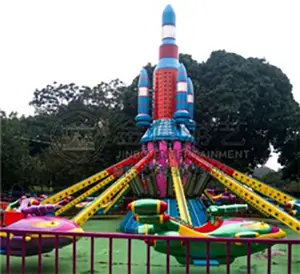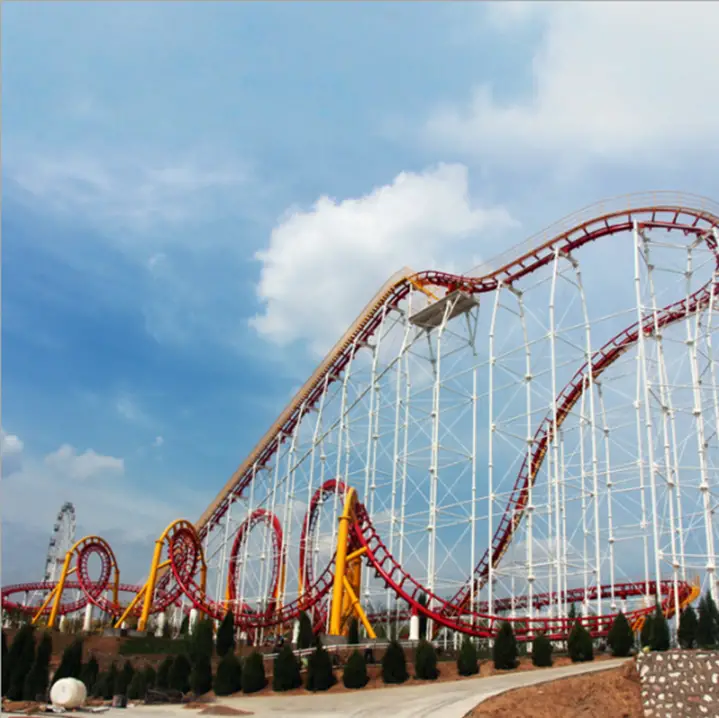Click here to get this post in PDF
Non-destructive testing for amusement rides is getting popular day by day because of its countless advantages to the manufacturers of amusement rides. There are many ways to implement NDT testing on amusement rides and other equipment. Without further delay, let’s get straight to it.
What is non-destructive testing?
Non-destructive testing is an analyzing and evaluating technique used to examine the properties of a material, structure, or system for any functional defects or characteristic differences and welding flaws without damaging the original part.
Why Amusement Rides need non-destructive testing?
Well, the first and foremost advantage of non-destructive testing for amusement rides is that the rides can be tested without harming or damaging the rides themselves, which, if it happened, can hit the owner’s pocket with a huge blow.
Secondly, this method uses multiple evaluative tests to ensure the ride’s stability, which is directly related to the safety of riders and the environment. Usually, two kinds of NDT methods are used for testing amusement rides.
One is ultrasonic testing, and the other is X-ray testing. These two kinds of NDT testing make it possible to analyze any deformity inside the ride structure.
Moreover, other NDT testing methods are also used occasionally, which includes the surface testing methods that detect any sort of imperfections in the outer structure and welding of the rides.
Everyone goes to the Amusement Parks to have fun, so it is essential to ensure the visitors’ safety and well-being for both the Park managers and government. Hence, Non-destructive testing makes it easier and efficient to do that.
Different ways non-destructive testing
1. Visual Inspection non-destructive testing method:
Before any other non-destructive method is utilized, the visual inspection method can visually analyze any defects and deformities in the structure. This method is ideal for revealing any potential wear and tear or corrosion on the structure. Plus, it also helps to assess where other testing methods should be used. Visual Inspection can be done using borescopes, sophisticated lighting systems, and robotic crawlers.
2. Magnetic Particle Inspection non-destructive testing method:
One of the most extensive used inspection methods for amusement parks, and it involves using magnetic fields as a means of testing. When materials are magnetized, the magnetic fields tend to travel within the material, making it possible to detect defects as the applied magnetic field jumps and exits the fabric if it comes in contact with any crack or deformation.
3. Liquid Penetrant Inspection non-destructive testing method:
LPI (Liquid Penetrant Inspection) is a method used to detect surface breaking in all sorts of non-porous materials, from metal to plastic. Liquid Penetrant is applied to both magnetic and non-magnetic materials. However, it is best if the magnetic particle method is used for magnetic materials. Liquid Penetrant is usually used to detect cracks, casting and forging defects, and leaks in the material.
4. Ultrasonic Inspection non-destructive testing method:
In this testing method, ultrasound is used to detect deep defects like cracks and inclusions. The most common types of ultrasonic testing methods are ultrasonic thickness testing and ultrasonic weld inspection.
5. Eddy Current Inspection non-destructive testing method:
Eddy Current Inspection method is nowadays being used in place of the Magnetic Particle method, primarily; for defects under painted materials. Welds and other flaws are also examined using this method.
6. Magnetic Flux Leakage Inspection non-destructive method:
Magnetic Flux Leakage is mainly used for rope inspections and rides like chair lifts, roller coaster launch cables, return cables, etc.
Other Advanced non-destructive methods:
- Advanced ultrasonic rail track inspection
- Guided wave tubing inspection
- Phased array ultrasonic inspection
- Robotic unmanned drone inspection
- Bolt torquing inspection
Principal of Jinbo rides:
Jinbo practices the following principles for amusement rides:
· Design Approval:
This practice involves getting detailed ride structure, design, required engineering accuracy, and safety aspects of the ride. The documentation for design approval includes the below-mentioned information:
- Experience of the manufacturer, ride model and serial number
- Rating and power of the mechanical and electrical system of the ride
- The general lifespan of the ride
- Passenger capacity, weight carrying ability, and location for the amusement ride
- Signaling and communication
- Operating method of the ride
- Equipment design, drawing, operation, and construction
· Permit to use and operate:
This step is carried out before opening the ride for the general public and after the ride’s manufacturing. This process requires the manufacturer to arrange for usage and operating permit, including a final inspection by the surveyor.
· Annual in-service examination:
The need for this step arises, when the manufacturer does any changes or modifications to the amusement rides in the maintenance process, structure, capacity, working system, speed, and electrical and mechanical system. To check the sound functionality of the ride a surveyor is hired to do an overall examination of the ride.
Types of Jinbo Products:
- Family Rides
- Kiddie Rides
- New Rides Serie
- Roller Coaster
- Ferris Wheel
- Carousel
- Bumper Car
- Pirate Ship
- Pendulum
- Self Control Plane
- Drop Tower
- Flying Chair
- Flying Tower
- UFO Turntable Ride
- Tagada
Conclusion:
NDT or non-destructive methods are crucial for the safety of riders and the rides as these methods prioritize examining the rides and equipment without damaging them.
You may also like:
This zoo has built amusement rides in the park!
How Industrial CT Scanning Uncovers Defects Invisible to Traditional Methods
Image source: https://www.jinboride.com/


